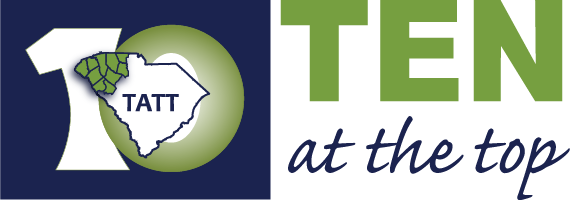
Aug 19, 2020 | Staying on Top, UpstateVibe365

Paul Clark, Managing Director, VentureSouth
by Paul Clark, Managing Director, VentureSouth
Mental health issues affect 1 in 5 Americans, according to National Alliance on Mental Health data.
Mental health issues have long been recognized as particularly prevalent among entrepreneurs and company founders.
Mental health issues are intensifying as people struggle with physical health, economic dislocation, isolation, and stress during a global pandemic.
Combine these three statements together, and it is not surprising that the mental health of entrepreneurs is facing a challenge of an intensity and scale we have never seen before.
Fortunately, there are two silver linings to this unprecedented combination of stresses. First, founders’ mental health challenges are better recognized than they have ever been. And secondly, right here in the Ten at the Top upstate counties, we have resources and experts to help provide resources to build resiliency and lessen the impact of these challenges on our mental health.
What is mental health resilience?
In mental health circles, resilience is the process of adapting well in the face of adversity, tragedy, or stress. It is the ability to bounce back from challenging experiences and find ways to adapt, control, or modify these experiences. For some fortunate people, it is an inbuilt personality trait, but, for most of us, the good news is building resiliency is a skill that can be learned.
Here in the Upstate, Venture Carolina is a non-profit in Greenville that provides educational materials to entrepreneurs, particularly around methods for raising capital to grow businesses. One of its missions is to help make entrepreneurs more resilient—as that helps companies to persevere, stay in business, and position themselves for raising capital to grow when times improve.
Last year, Venture Carolina partnered with Sharpen, a mental health technology company in Spartanburg to work on the subject of founder mental health. Sharpen provides its technology to several populations of people that need support, including college students, veterans, foster families, and more. Venture Carolina and Sharpen have adapted Sharpen’s resiliency training materials to company founders, through the SharpenFounder platform.

What is the SharpenFounder platform, and how does it create resilience?
The SharpenFounder platform is available for free to entrepreneurs across the TATT region. Clinical studies show that peer-to-peer engagement is a very effective way of having a positive impact on mental health issues.
This is exactly what SharpenFounder provides: peer-to-peer video content of entrepreneurs sharing their stories directly to other entrepreneurs—stories of CEOs responding to “failure”; stories of founders changing their behaviors to avoid stress spiraling into substance abuse; stories of diverse CEOs responding to the specific challenges they face; stories, ultimately, of building resiliency and turning adversity into success.
Sharing the experience that other entrepreneurs gain on their journeys builds resiliency. The platform combines these stories with other clinically supported behavioral health tools, coping strategies, and nourishing techniques. These tools are embedded within a supportive community of other entrepreneurs, reducing the unique stresses of being a founder by sharing them with others. It also includes local and regional resources to help.
Being an entrepreneur was a precarious path before COVID. Now it often seems like an impossible challenge. But with resources like these available to help build resiliency, we are confident the future is bright for founders in our region. We hope you will check it out—and share with us your stories of building your own resiliency in these challenging times.

Aug 17, 2020 | Staying on Top

by Dean Hybl, executive director of Ten at the Top
There is little question that the first eight months of 2020 have provided all of us with personal and professional challenges that go beyond general expectations. In fact, I have no doubt that history books will be written about 2020 for many generations to come.
As I think about 2020, one of the things that has been most impressive has been seeing leaders from across the region quickly adjust to dealing with unimaginable adversity. Their willingness to move forward down a path filled with uncertainty makes me think of a quote attributed to that well-known American philosopher, Yogi Berra: “When you come to a fork in the road, take it.”
From the very beginning of this health crisis that has led to the greatest economic crisis since the great depression, community and business leaders have been confronted with many “forks in the road.”
 Rather than balk at the challenges, I have witnessed many leaders assess the challenges and quickly move forward down the road they believe will provide the greatest opportunity to overcome the immediate challenge and best support the community.
Rather than balk at the challenges, I have witnessed many leaders assess the challenges and quickly move forward down the road they believe will provide the greatest opportunity to overcome the immediate challenge and best support the community.
A crucial component of a great leader is to be willing to analyze options, take risks and make necessary decisions even when the outcomes are unclear. However, they also must recognize that developing partnerships and being flexible enough to make adjustments on the fly are often critical to achieving success in an ever-changing environment.
Through a non-urban county listening tour as well as conversations with community and business leaders from across the Upstate, we have realized that while there have been immediate challenges created as a result of the pandemic, in many cases the crisis has magnified issues that were already on the radar, especially in rural and low-wealth communities.
Those issues include:
- Access to Transportation—Lack of transportation has kept people from accessing hot spots for e-learning, meal distribution, and jobs
- Broad Band & High-Speed Internet—Lack and expense of high-speed internet is a barrier to communities in all counties
- Entrepreneur and Small Business Support—COVID-19 has spotlighted the fragility of small businesses and struggles to access and utilize business resources
- Support for Seniors—Challenges related to COVID-19 have magnified the lack of resources to support our growing senior population
- Workforce Training & Talent Attraction—While the unemployment rate has increased due to COVID-19, the Upstate must still focus on ensuring a skilled workforce and attracting talent for business & industry
- Equality of Opportunity—The pandemic has magnified the inequity around opportunity for people in low-wealth and rural communities
- Public Safety—The social unrest that has occurred in parts of the country illustrate the importance of creating a united Upstate where law enforcement officials and residents work collaboratively to ensure the safety of everyone
Ten at the Top and many other community organizations, local governments and businesses across the region have been working on initiatives to impact most of these issues since long before the pandemic.
In many ways, the pandemic has validated those efforts while also illustrating just how crucial it is to continue taking steps that successfully address them.
By continuing to move forward in this time full of “forks in the road,” Upstate leaders are taking the steps needed to ensure we address both the short-term and long-term issues so that once the crisis subsides, all communities, businesses and residents will be stronger together.
For more information about current Ten at the Top initiatives as well as the full summaries from the Upstate Listening Tour, go to www.tenatthetop.org

Aug 14, 2020 | Staying on Top
Welcome – Terence Roberts, TATT Chairman

Sam Konduros, President and CEO, SCBIO
Guest Presentation – Sam Konduros, President and CEO, SCBIO (South Carolina Biotechnology Industry Organization)
- While other industries are down as a result of the pandemic, life sciences are up. From testing to face shields to respiratory drugs, the life science industry is an important part of the fight against COVID-19.
- Repatriation and onshoring of life science companies will put the U.S. on a more solid footing in the future in terms of drug and PPE production.
- Third party study was done to reveal the growth of the industry across the state
- 50,000 jobs, $14 billion annual impact
- What is life science? Drugs & pharmaceuticals, med tech, digital health/heath IT (software, apps, etc.), research/testing/medical labs, bioscience distribution, and bio/agriculture
- See his presentation here
- You can read Sam’s guest post on our Staying on Top blog here
TATT Updates
Dean Hybl, TATT Executive Director
- Next TATT Chat with Sean Dogan, August 27th—register here
- Networking time 20 minutes prior to the meeting on upcoming TATT Chats! Sign on early to network with friends and colleagues.
Justine Allen, Program and Event Coordinator:
- First Sneak Pique event on September 14th—virtual happy hour! Register here
-
-
County Updates
Abbeville County (Shannon Sears, WCTEL):
- About 30% of students will be participating in online schooling
- CARES grants for fiber upgrades to underserved areas
Cherokee County (Drake Scott, Main Street Director, City of Gaffney):
- Despite COVID-19 challenges, good things happening at BGEN, Gaffney’s small business incubator
- 8 businesses housed in the incubator
- First graduate of the incubator: Zachary’s Coffee Shop is moving out to a building in downtown this weekend
- ARC grant to do renovations to the BGEN building to expand office space for more residents
Greenwood County (Art Bush, Greenwood Partnership Alliance):
- Transition in Greenwood County—county council voted to leave the partnership alliance and take industrial development with it
- Re-examining mission, will continue with activities that were going on: workforce development, public transportation, housing, city center development, and working with Greenwood Genetics Center, which just launched a
- Drone project with five industrial projects
Spartanburg County (Bea Smith, Spartanburg Community College Foundation):
- We are open for business! Never really stopped, transitioned to virtual classes in the spring and continued throughout the summer
- Dr. Henry Giles retired as president this summer after 50 years of service
- Welcomed new president, Dr. Michael Mikota
- SCC Foundation has worked to make students aware of emergency fund and book fund
- School starts Monday—virtual, hybrid, and face to face
Union County (Curtiss Hunter, Union County Tourism):
- Continuing to work on comprehensive plan, hope it will be adopted before the year’s end
- Formed a recreation/event task force to help citizens who are hosting events, to keep people in compliance and safe
- Private developer who created a western town as a tourist attraction on the Pacolet River called Wildwood Ranch—beautiful facility for events, working with him to get that up and running once the pandemic subsides

Aug 12, 2020 | Staying on Top, UpstateVibe365

Julie Capaldi, President, United Way of Pickens County
by Julie Capaldi, President, United Way of Pickens County, with Sharon Purvis
South Carolina has landed in the national news with the lifting at the end of July of the eviction moratorium, as the state had the highest eviction rate in the country even before the pandemic, and more than 50% of renting households are at risk of eviction. Affordable housing is an issue that comes up again and again as an intractable problem in both urban and rural counties here in the Upstate.
Upstate non-profits that provide assistance have been stretched thin throughout the last several months. Initially the focus was on food access before stimulus money arrived and unemployment kicked in; the next wave was utility assistance as people continued to struggle to meet their bills, but the moratorium on evictions kept the fear of losing their home at bay. Now the focus will be on rent assistance as families who are teetering on the edge of homelessness seek help.
The United Ways across the Upstate provide the funding to those direct assistance organizations, and they need continued support in order to be able to meet those needs.
Julie Capaldi, president of the United Way of Pickens County, shared the following on the organization’s Facebook page last week. The need, of course, is not just in Pickens County, but the sentiments expressed by Julie are representative of what’s happening all across the Upstate.
Yesterday the need for COVID-19 Recovery Funds just exploded.
BOOM!
First, United Christian Ministries asked me for $10,000 to provide rent assistance for struggling families. Five minutes later, the Salvation Army called and asked for funds to provide rent and utility assistance. They only had $240 left!
When I hand delivered the check to Salvation Army, I was shown the long list of families requesting assistance. I was shocked!
The coronavirus continues to devastate families in Pickens County. Local families still need your help.
Weeks ago, I told you about the impending crisis I was worried about when the rent and utility bills came due. I called it “The Utility Tsunami” because that’s what it felt like. A storm of epic proportions just waiting to erupt.
That Utility Tsunami is HERE, along with a Rent Avalanche, and the needs are staggering.
Many people have not been able to return to work. Stimulus checks are long gone. Large unemployment checks have run out. The bills are due and they can’t pay them.
For hardworking people, the consequences of this pandemic are devastating. They suddenly have no income, a dim future, and many are not surviving.
They need you. You are the only one who can save them.
The pandemic is not done wreaking havoc on our community and people’s lives. It’s only going to get worse and that is why I am asking you to help.
If you have already given, THANK YOU! Please consider giving again. Ask your friends to join you. If you haven’t given, I pray that you will. There are families in Pickens County who will not recover without you.
Please make a secure gift to provide emergency assistance. You will save families and seniors and children. Never has your support meant more to our community.
You will save a family from losing everything.
With Gratitude,
Julie Capaldi
You can donate to your local United Way at the links below:
United Way of Anderson County
United Way of Greenville County
United Way of Greenwood and Abbeville Counties
United Way of Laurens County
United Way of Oconee County
United Way of Pickens County
United Way of the Piedmont (Cherokee, Spartanburg, and Union Counties)
Or you can give to the One SC Fund, which supplements the efforts of the various local United Ways.

Aug 12, 2020 | Staying on Top, UpstateVibe365

Darren Jansen, Content Manager, IVANNOVATION Language Management
by Darren Jansen, Content Manager, IVANNOVATION Language Management
Companies constantly waste money by making simple mistakes with their translation strategy. And yes, translation should be approached with a strategy. Yet most companies translate on an ad hoc basis without a game plan.
Here are five strategies that companies can use to save money on their translations.
1. Send Editable Files for Translation
Whenever possible, don’t send PDFs or images of the document to the translator. Instead, deliver the editable source file to the translator or the translation company for them to translate.
One of the greatest misconceptions of translation is that translators sit at their computer with a PDF and a Word document open on their computers and that they look back and forth between the two translating.
The truth is that for decades translators have been using sophisticated translation tools that can extract the text from editable files—such as DOCX, XLSX, PPTX, INDD, etc.—and then after the translator is finished working, these tools can simply replace the original text with the translated text.
Typically there is little need to spend any time formatting or redesigning the translated files.
If you give PDFs to translators, they must spend additional time recreating and reformatting the document in a new language.
2. Design the Original Documents So They Can Be Translated Easily
 Mainly designing documents for translation involves two things.
Mainly designing documents for translation involves two things.
First, many languages take more space than English. For example, German text can be around 30% longer than English.
When we created a free poster in six languages to inform people about COVID-19, we had to edit down the English text several times so that the final versions in other languages would not be cramped in the design.
Second, make sure that all text in your document is actually editable text, not photographs of text. For example, if you have help documentation with photographs of diagrams, the words in those photographs cannot be translated easily with the rest of the document.
3. Have a System for Q&A
A system for translators to ask their questions and get responses from content creators is critical for translation. Email is inefficient and ineffective.
A good Q&A system will allow translators to search for other questions that have been answered in the past and post their own questions.
At IVANNOVATION we often use a spreadsheet-type system for Q&A. We created a spreadsheet template based on our Q&A system that can be downloaded for free here.
4. Use Machine Translation With Human Post-Editing
Let a computer translate the text and then have a human post-edit the translation.
This “machine + human” method can lead to significant savings, depending on the quality of the machine translation output.
5. Use Translation Memory Technology
By using translation memory, IVANNOVATION was able to save one of its customers $30,000 on a single project. Our bid for the project was 25% lower than any of our competitors.
With translation memory, every sentence gets saved into a database with its translation. Then you will never pay to translate that sentence again.
Further, similar sentences are translated at a discount. For example, if you translate, “Please open the door,“ it will always be translated for free in the future. But, “Please open the window,” is different by only one word, so the per-word-rate for this sentence is discounted.
For companies that are continually updating their content or for companies that have several similar product lines, the use of translation memory can be a revolutionary technology that saves massive amounts of money over the long term.
Thinking strategically leads to quality translation at lower cost.






 Rather than balk at the challenges, I have witnessed many leaders assess the challenges and quickly move forward down the road they believe will provide the greatest opportunity to overcome the immediate challenge and best support the community.
Rather than balk at the challenges, I have witnessed many leaders assess the challenges and quickly move forward down the road they believe will provide the greatest opportunity to overcome the immediate challenge and best support the community.





 Mainly designing documents for translation involves two things.
Mainly designing documents for translation involves two things.